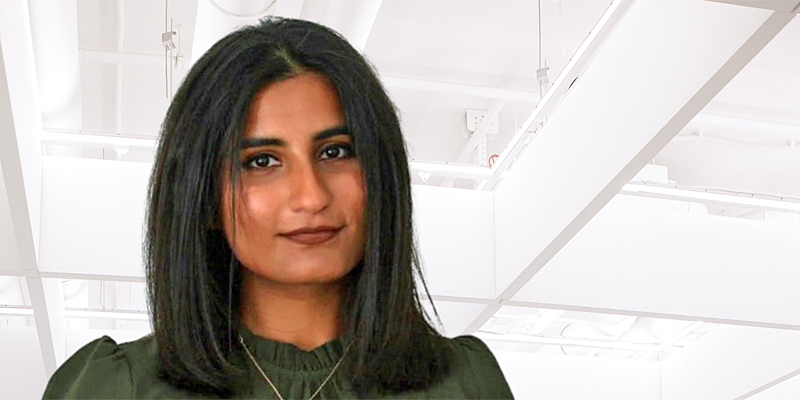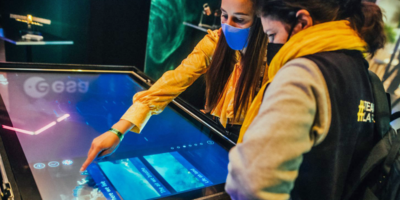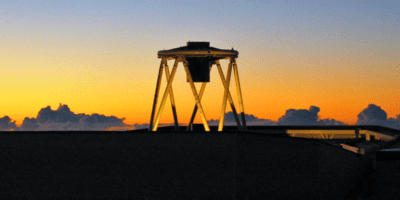Rida E Zainab is a spacecraft algorithms engineer at CGI (formerly known as SciSys), an IT and business consulting services firm. She is one of the lead engineers on SMILE, (the Solar with Magnetosphere Ionosphere Link Explorer) and has also worked on the European Space Agency’s Mars rover, a planetary surface exploration device designed to move across the solid surface of Mars. She is also a passionate advocate for girls and women in STEM careers.
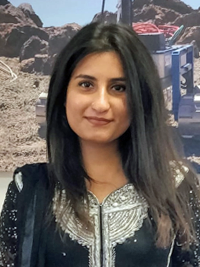
“You would be surprised how software engineers spend a lot more time debugging and testing their code instead of actually writing it. (I know I was surprised initially!)”
New country, new subject
I came to the UK in 2012 and did my A-levels here in maths, physics, ICT and computing. The only reason I actually chose computing at that time was because I thought: “I have just come all the way across to a new country, so I might as well risk a new subject too!” Looking back now, that was the first decision that kicked off all my other plans that lead me to start working in the space sector.
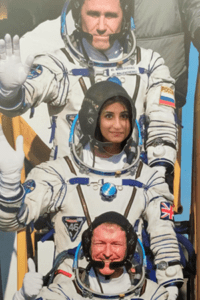
The role of a spacecraft algorithms engineer
My role generally varies depending on the life cycle of the project. I write the detailed design for the modules either for myself or for more junior members of the team. I also implement the design and turn it into readable and executable code.
This code is then tested rigorously on various levels – this is where I actually spend a lot of time. You would be surprised how software engineers spend a lot more time debugging and testing their code instead of actually writing it. (I know I was surprised initially!) There is also lots of documentation to update as the space projects are generally contracts between different companies, so the client should be able to understand your work without having to email you 24/7.
As one of the lead engineers on SMILE, I also spend time mentoring junior members. One of my mentors gave me some great piece of advice when I moved to a more senior role, which stuck with me: “When you start climbing up the seniority ladder, you have to learn how to quickly switch from your work to someone else’s work and then back to yours without losing the train of thought.”
Striking the right balance
I wouldn’t say COVID-19 made anything harder for my work, it just made it different. As I solely work on software, I was able to stay at home during all lockdowns and not have to worry about exposure to the virus. However, I unintentionally started working longer hours because my laptop was just there in front of me. It took me a while to strike a decent work/life balance or whatever that meant when we were all staying indoors for a year or so.
Fast forward to now, I missed the social aspect of being in the office and having random water cooler chats with my colleagues. CGI has been incredibly supportive throughout the lockdowns and ensured we were all taken care of. None of us were made redundant and most of our projects carried on as they were which was a big achievement. Currently, I am hybrid working which seems like a natural step forward in getting back to the new normal.
Mars calling…
My work on the Mars rover entailed design and implementation of two complex scientific algorithms. Mars is millions of kilometres away from us and it takes anywhere between 5 to 20 minutes for our messages to be delivered to the rover and for us to hear back from it. We also have a very limited bandwidth available to us for communication so we have to ensure we use it wisely.
The rover has quite a few cameras on board, which we use for different scientific purposes. The first algorithm I worked on was the image compression algorithm, which is crucial to the mission due to the large sizes and quantities of images we have to downlink.
The second algorithm was a region of interest detection algorithm, which tells us if we have the compounds we are looking for e.g. oxides and ices, in the collected Martian samples.
Both of these algorithms combined enable an efficient telemetry (messages) downlink from the rover and also help us understand the characteristics of Martian soil.
SMILE, please
SMILE aims to build a more complete understanding of the Sun-Earth connection by measuring the solar wind and its dynamic interaction with the magnetosphere. My work on SMILE is focused on the communication side of the project instead of algorithms. In order to communicate with the satellite, we send telecommand (TC) and in response, we receive telemetry (TM) back. I work on the implementation of these TCs and TMs including the underlying communication and data buses to ensure we are able to control the satellite.
Being more creative and taking more risks
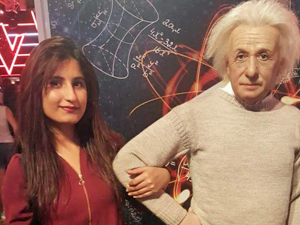
We need to do better to ensure our rocket launches are greener for the environment and our orbital debris doesn’t threaten other missions. If it weren’t for the entrepreneurs who thought outside the box and took the risk, we might still have been only talking about these issues instead of actually doing something about it as we are now.
Incredible careers in an incredible sector
I had absolutely no clue on how to get into the space sector as in my head “space = astronauts or mission control”. My mindset changed when a STEM ambassador told us that she changed her career three times to finally find that civil engineering was the one for her. She also mentioned that every single role she held up until that point (even horse riding!) helped her in being a better engineer. Her journey was so inspiring that it made me sign up to be a STEM ambassador as well.
The space sector has numerous opportunities for people with different skill sets. I started working here as I knew how to write code and had a passion for all things space. If you are interested in working in the space sector, doesn’t matter what field you are from or what you are studying, my best advice would be to make a list of the kind of roles you’d enjoy working in. After that, look up some of the space companies and by that, I literally mean type into your search engine ‘space companies’ and you’re good to go.
If you found a company you resonate with then reach out to someone from that company on Linkedin and 9/10 times they’ll be happy to help you. You can also join or talk to someone from UK Students for the Exploration and Development of Space (UKSEDS), which is an organisation made for and run by students who are all passionate about space and they always reply back! More importantly than anything, just remember that it’s not too late to find your dream job in this incredible sector so keep looking.
Excited for the future and flying high
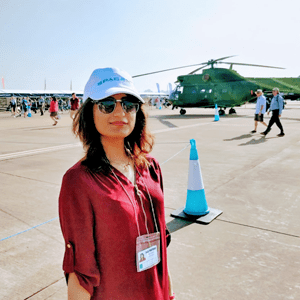
I am also currently leading a team of volunteers from CGI to launch an exciting space-themed game for young students to raise their awareness of all things space, which is actually taking up a lot of my free time these days so do keep a lookout on my Linkedin profile if you’re interested.

